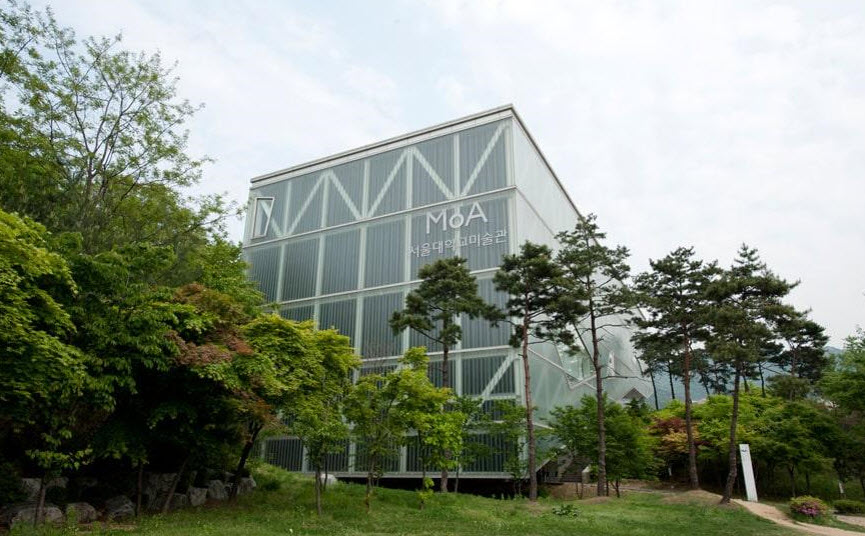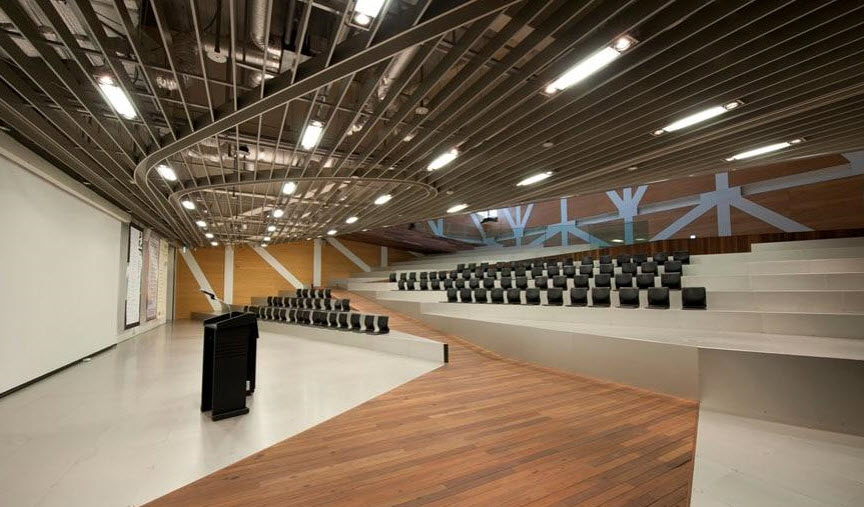When walking up to the campus from the main entrance, one encounters the impressive mass of the SNU Museum of Art (MoA). Designed by world-renowned Dutch architect Rem Koolhaas in 2005, the building embodies the relationship of the campus to the community and serves as a spatial link between them.

SNU MoA seen from the main bus stop / Credit: Inexhibit
Rem Koolhaas is perhaps best known in Korea as one of the three eminent architects who designed the Samsung Leeum Museum. Like the SNU MoA, the Child Education and Cultural Centre in the Leeum complex exhibits many of Koolhaas’ signature architectural elements: an emphasis on movement and the procession by which the visitor navigates the space.
Despite its proximity to SNU’s iconic and imposing main gate, the MoA relates to the public in a much more intimate way. Following the natural slope of the landscape, a diagonal path links the community to the building, drawing visitors up and into the SNU campus. This kind of urban consciousness is a signature feature of Koolhaas’ work, which often seeks to monumentalize movement and circulation.

Topographical architectural model of SNU MoA / Credit: Office for Metropolitan Architecture, College of Architecture Texas A&M University
The emphasis on mobility is continued in the interior of the building, with diagonal ramps connecting the main entrance through the lobby to the auditorium, lecture hall and exhibition spaces. There is an unending path throughout the whole space, which also creates diagonal qualities and emphasis on interstitial openings.

Continuous ramp leading into the lecture hall at SNU MoA / Credit: Inexhibit
Outside, the dramatic overhang of the building creates a vast shaded space where you can find students and faculty gathered around tables enjoying a cup of coffee, or groups of schoolchildren taking a rest during their campus tours on a hot day.
Written by Minju Kim, SNU English Editor, minjukimm@snu.ac.kr
Reviewed by Professor Travis Smith, Department of Asian Languages and Civilizations, tlsmith@snu.ac.kr

